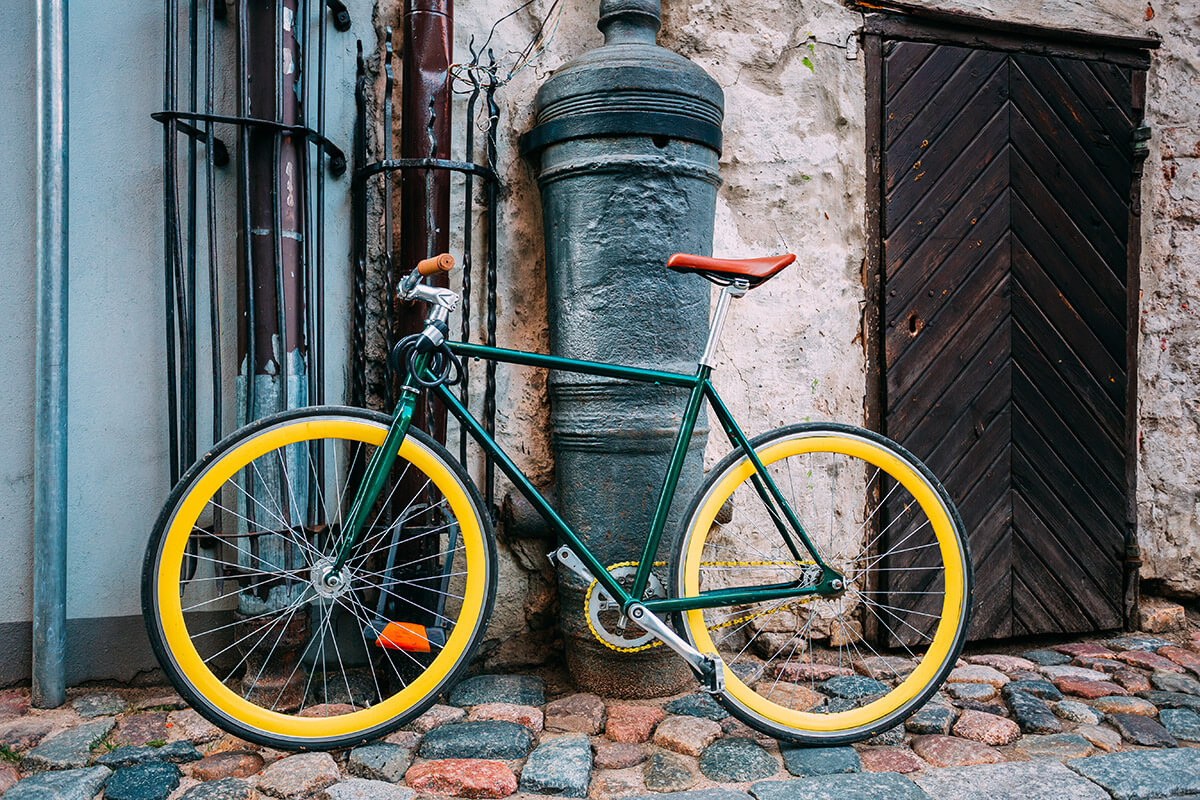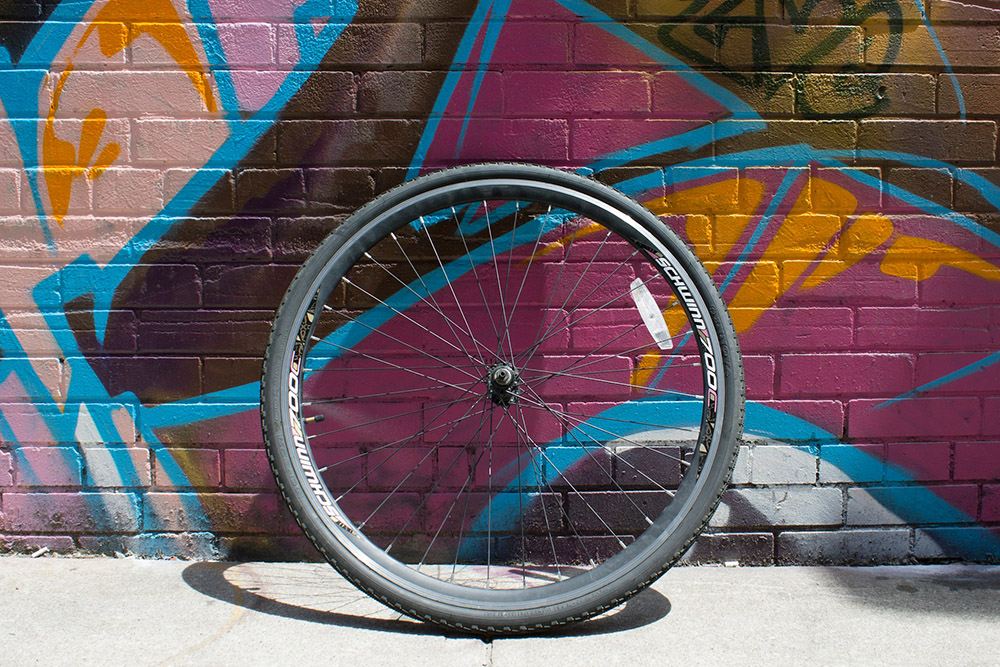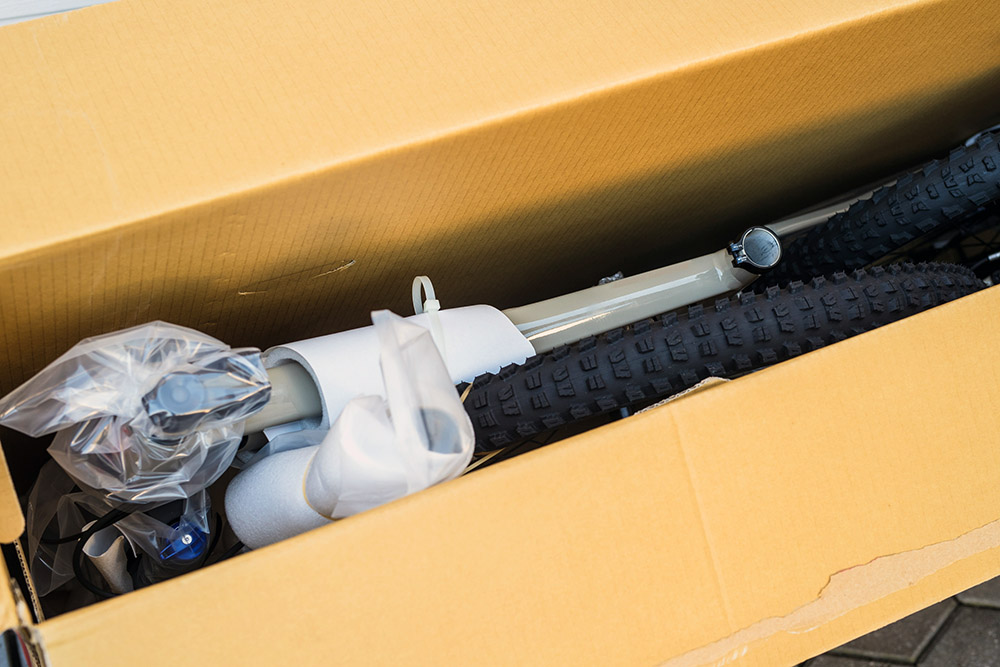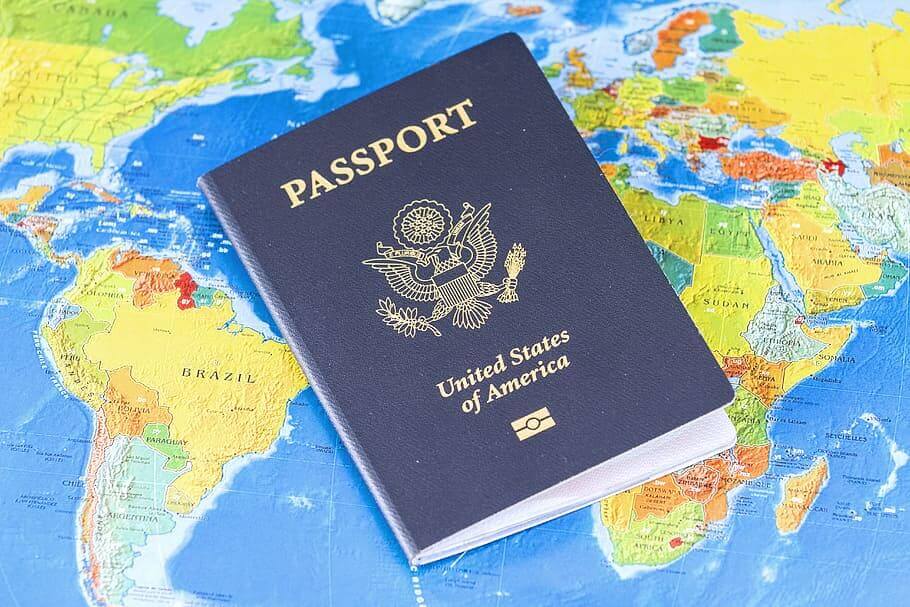

You’ve spent countless hours on your two-wheeler, and now it’s time to ensure it’s packed with the care it deserves for its overseas journey. But how to pack a bicycle for moving? There’s an art to packing your ride that goes beyond simple box stuffing. We will take you through the steps of packing your bike as though you’re preparing it for the ride of a lifetime. Ready to gear up for the trip? Let’s get started.
How to Pack a Bicycle for Moving
Start by cleaning and inspecting the bike, removing accessories, and partially deflating the tires. Disassemble key components like the pedals, wheels, and handlebars, and secure loose parts such as the seat and chain. Use protective wrapping like bubble wrap and foam to safeguard the frame, wheels, and other delicate parts. Choose a sturdy, appropriately sized box, and use tape, zip ties, and straps to stabilize everything inside. Clearly label the box for fragile handling.
If you’re not sure you’ll be able to do it properly, keep in mind that hiring a relocation company is often a better option. The reason is obvious – professionals have the expertise and materials to pack and transport your bicycle safely, ensuring a stress-free relocation process from start to finish. Well-wrapped and secured components, such as the frame and wheels, reduce the risk of scratches, dents, or breakages from rough handling. Ensuring your two-wheeler is properly packed helps avoid these issues, making the relocation smoother and more cost-effective.

Prepping Your Bicycle for Packing
Proper relocation day preparation will not only prevent damage during transit but also make the reassembly process much smoother. That being said, before you start packing your two-wheeler, it’s crucial to give it a thorough clean. Dust, dirt, and grime can accumulate on the frame, chain, and gears, which could cause issues during transit. Use a gentle detergent and water to scrub down your bike, paying special attention to hard-to-reach areas.
Once it’s clean, take a moment to inspect it for any damage. Check the tires, frame, and gears for wear or cracks that may need repair before the big move. A clean and well-maintained ride is easier to pack and reassemble on the other side of your journey.
Remove and Secure Accessories
Any extra parts or accessories attached to your two-wheeler, such as water bottle holders, lights, or saddlebags, should be removed before boxing up. Remember – when moving overseas, these accessories can easily get damaged or come loose in transit. Keeping everything organized and well-protected ensures that all components of your ride arrive safe and sound.
Deflate Tires to Avoid Pressure Issues
Tire pressure can change dramatically when relocating to another country. To prevent any potential blowouts caused by pressure changes, partially deflate your tires before packing. Deflating the tires also helps fit the bike into the box more comfortably, giving it extra cushioning from any bumps along the way.

Disassembling the Bicycle for Easy Packing
To ensure your bike is safely packed for moving abroad, disassembling must be on your to-do list. By breaking down your two-wheeler into smaller components, you can fit it securely into a box and reduce the risk of damage.
Removing the pedals is one of the first steps in preparing your bicycle. Use a pedal wrench or an Allen key, depending on the type of pedals your ride has. Pedals are threaded differently – on the right side, the pedal unscrews counterclockwise, while on the left side, it unscrews clockwise. Securing these smaller parts separately ensures they don’t rattle around or scratch other components.
*Easy cycling, such as during a commute, burns roughly 300 calories per hour
Next, remove the wheels and handlebars to make your bicycle more compact. Start with the front wheel by loosening the quick-release lever or using a wrench. Once the front wheel is off, you can proceed to remove the rear wheel in the same way. After the wheels are removed, move on to the handlebars. Depending on your bike’s setup, you may either loosen the stem bolts or remove the handlebars from the stem. This process allows your bicycle, whether it’s a mountain bike, road bike, or hybrid, to fit snugly into its packaging.
Securing Loose Components Like the Seat and Chain
Remove the seat post from the frame. You can also lower the seat post instead of removing it entirely, depending on the box’s size. The chain should be either removed or carefully secured to avoid it moving around during transport. If you opt to keep the chain on, consider using a chain keeper or protector to hold it in place and avoid any tangling or damage to the frame.

Choosing the Right Packing Materials
The first step in packing your two-wheeler for an international relocation is finding the best-sized box. You have two main options – cardboard bike boxes for moving or hard-shell bike cases. A cardboard box is more cost-effective, while a hard-shell case offers additional protection but comes at a higher price. Whichever you choose, ensure it fits your two-wheeler snugly while leaving enough room for padding around the frame.
The key is to find a box that accommodates your bike’s dimensions while allowing room for disassembled parts. Once you have the box, it’s essential to protect your bicycle’s delicate parts with sufficient packing materials. Therefore, when it’s time to move, make sure you have enough:
- Wrapping materials, such as packing paper and bubble wrap,
- Padding supplies, like foam peanuts,
- Tape, zip ties, and straps to secure everything in place.

Step-By-Step Guide on How to Pack a Bicycle for Shipping
The best way to ship a bicycle is to ensure every component is properly disassembled, padded, and secured within the shipping box. Therefore, make sure to consider the following steps (and relocation hacks within) if you wish for it to arrive safely at your new destination:
Wrap the Detached Parts and the Frame
Wrap the frame, handlebars, wheels, and pedals in bubble wrap to cushion them against impacts during transit. Foam tubing or pipe insulation is another great option for protecting the frame and any exposed components. Ensure that all exposed parts are fully cushioned to prevent any damage during transit. Once wrapped, secure the padding with tape, making sure it stays in place.
Place the Frame in the Box
How to pack a bike box? Start by laying a layer of bubble wrap or foam padding at the bottom of the box for extra cushioning. Carefully lower the frame into the box, ensuring it sits snugly without too much wiggle room. Make sure any delicate parts are protected with additional padding to avoid contact with the box walls.
Arrange the Wheels and Handlebars
Lay the wheels flat along the sides of the frame, ensuring there’s padding between the wheels and the frame to prevent scratches. Place the handlebars either alongside or underneath the frame, depending on how much space you have. Use foam or towels to fill any gaps and keep everything stable during transit.
Secure Loose Parts and Fill Gaps
Finally, secure any loose parts like pedals, seat posts, or accessories. Fill any remaining gaps inside the box with foam sheets or towels to ensure nothing shifts during handling. Once everything is in place, use packing tape to seal the box and reinforce the seams, ensuring your two-wheeler remains protected during its long journey.
Label Your Packed Bicycle
Using propeller relocation labels for your bike is essential for ensuring that the handling crew treats it with care. Use large, visible lettering stating “Fragile” on multiple sides of the box. Consider adding stickers or labels that indicate “Handle with Care” or “This Side Up” to further guide proper handling. The more visible the instructions, the more likely your bicycle will be handled delicately. It will minimize the risk of relocation mistakes or damage during loading, unloading, and transportation.
Understanding Customs Regulations for Bicycles
When moving internationally, it’s essential to understand the customs regulations in your destination country. Each country has different rules, fees, and documentation requirements that must be followed to ensure smooth entry for your bike. Knowing these regulations in advance can help you avoid unexpected delays, fines, or additional costs.
Before you relocate and start living overseas, take the time to research the specific customs regulations of the country you’re sending it to. Some countries may require import duties or taxes on bicycles. Others may have restrictions on the type or value of goods allowed for personal shipment.
It’s also important to know if any special permits or declarations are needed for customs clearance. Checking government websites, contacting the local embassy, or consulting with your international moving company can provide valuable information to help you comply with these regulations. Preparing to move to another country properly will make the process smoother and avoid any unpleasant surprises when your bike reaches its destination.

Working With Professional Movers for Special Handling
When relocating to a new city abroad, getting professional packing services is often the best option. While packing your bike yourself may seem cost-effective, professional movers offer expertise, specialized equipment, and peace of mind that makes the process smoother and safer.
Professionals such as Shepherd International Movers have experience handling delicate and high-value items like bicycles. They know exactly how to disassemble, wrap, and pack each part to ensure your bike is fully protected during transit. They also have access to specialized packing supplies, which provide superior protection compared to standard materials. With the right international moving services, you’ll be able to minimize the risk of damage, ensuring your bike arrives in pristine condition.
When hiring movers, you can avoid the hassle and potential mistakes that can happen when trying to manage the process on your own. Remember – a top-tier company will save you time, reduce relocation stress, and ensure your bicycle is handled with the utmost care throughout its journey.
Let the Experts Handle Your Bike for a Stress-Free Move
Packing a bicycle for an international relocation requires attention to detail, from disassembling and protecting delicate components to ensuring it’s securely packed for the journey ahead. While following the steps outlined here can help you prepare your bike, there’s always the risk of improper handling, missed details, or customs complications.
Shepherd International Movers, however, can make a difference. We will not only save you time and effort but also guarantee your bike is packed with expert care using the best materials and methods. Contact us today for a hassle-free moving experience, and let us handle the journey to your next adventure!




